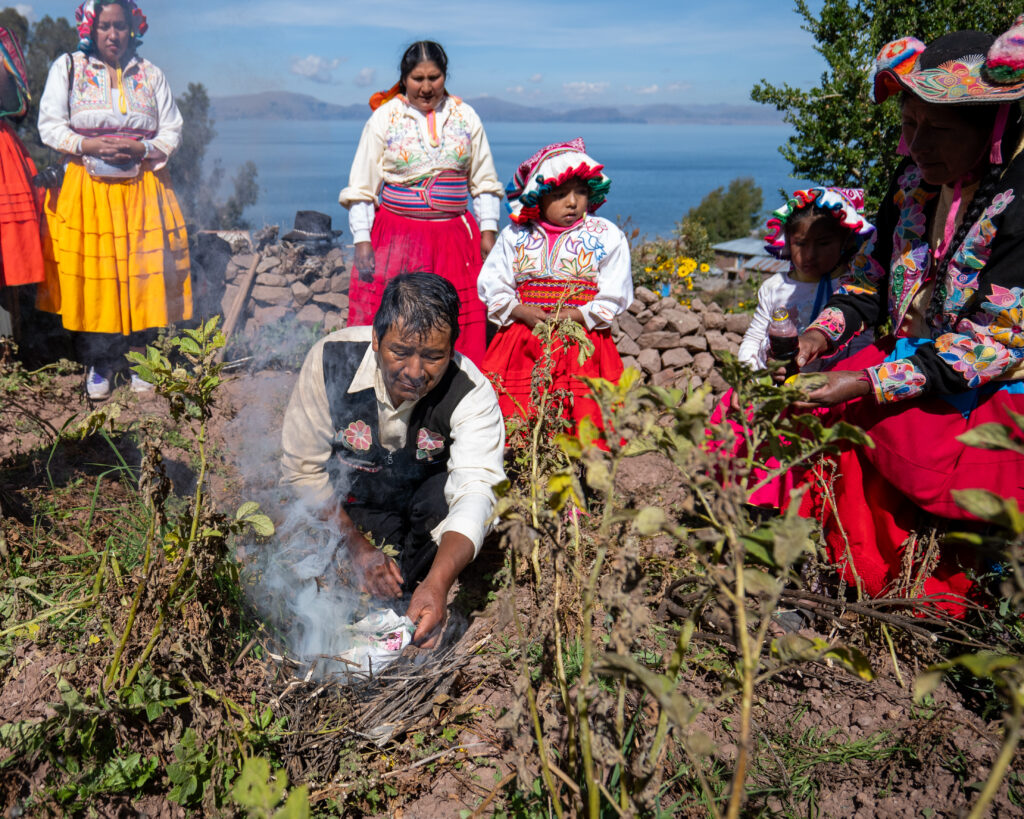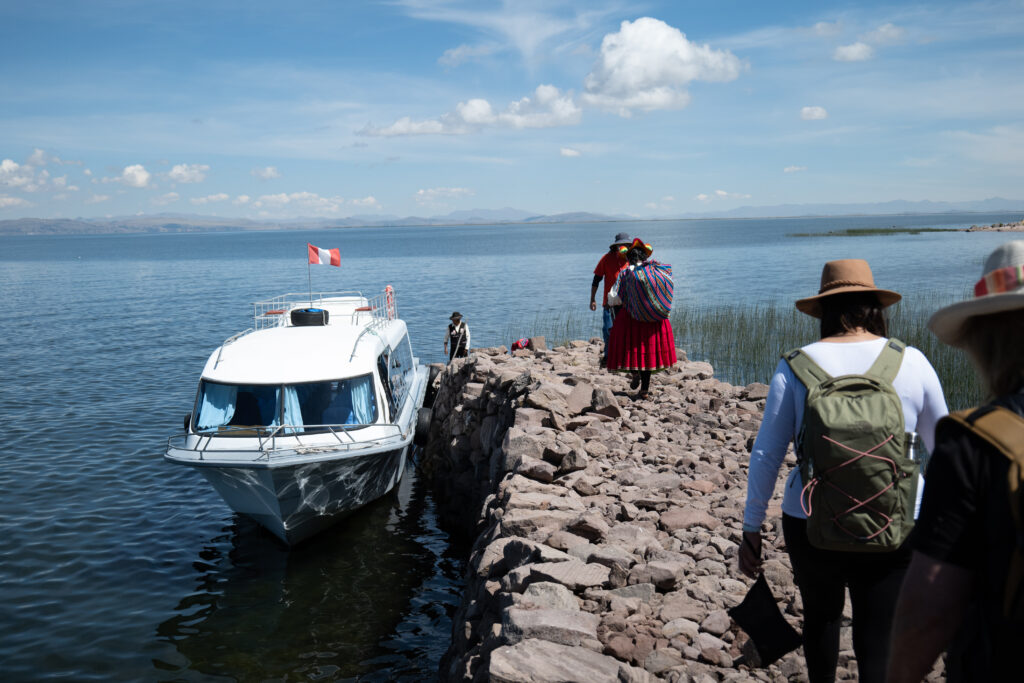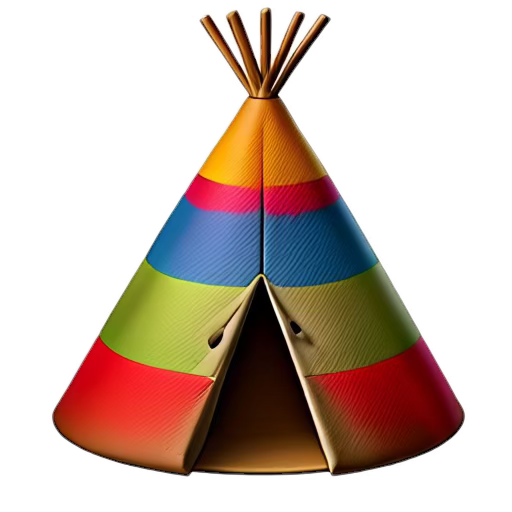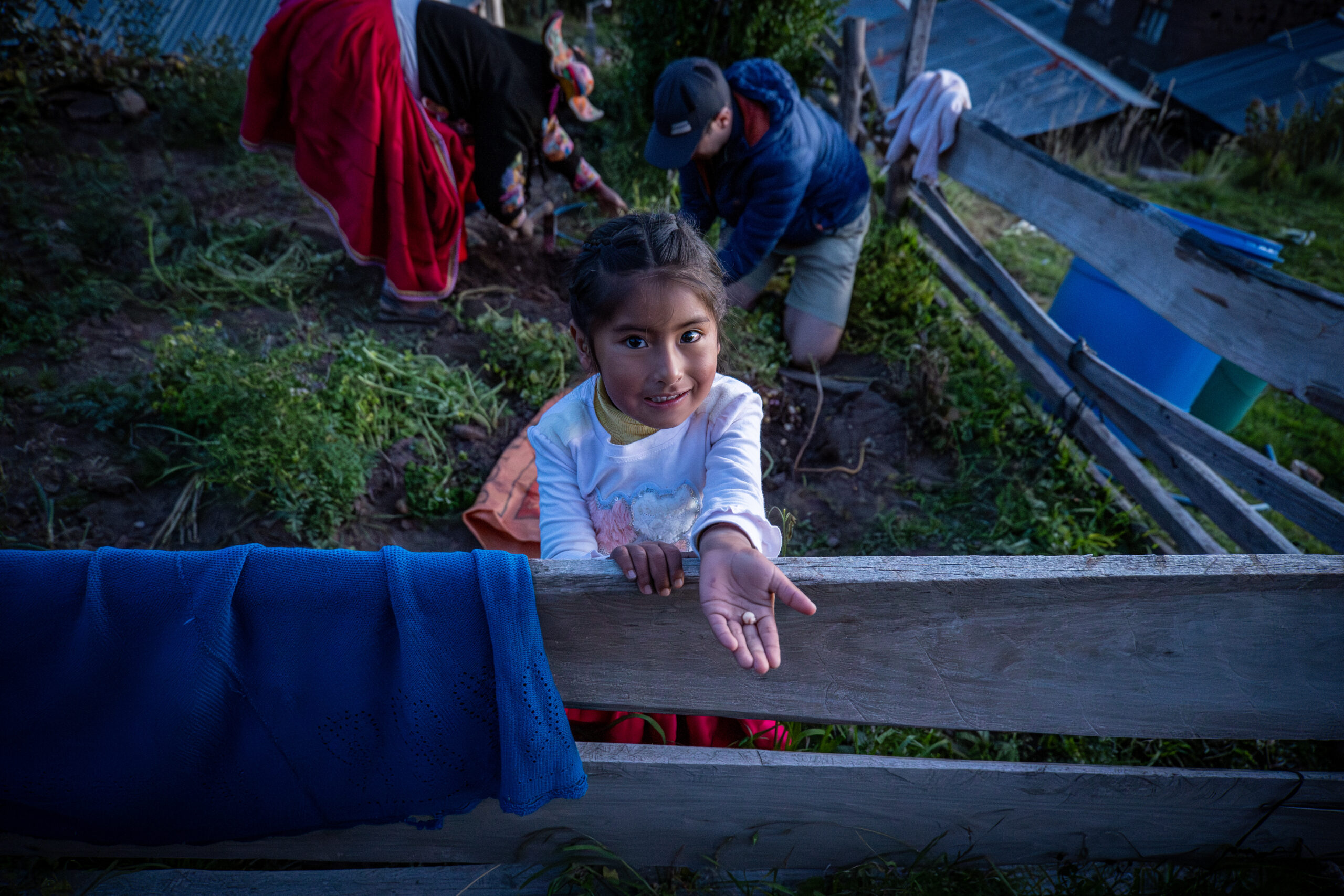Potatoes, Pisco and Peruvian family farms
Forget the Incas, Machu Picchu or the Andean condor – Peru prides itself on being home of the potato
Peru is famous for its potatoes, not just any potatoes, but thousands of different varieties! I lost count of the spuds I saw on the shores of Lake Titicaca.
When I visited Llachon, a small town on one of Peru’s many subsistence farms, I got to see a part of the country that most tourists don’t. About 99.8% of Peru’s farmland is family farms, and most of them only grow food for themselves. So, there are more smallholdings than potatoes! Some of these farms have been growing potatoes for over 7,000 years.
Peru is also known for giving us the tomato, quinoa, and cocaine. You’ll still see locals chewing coca leaves, which they call “chatting.” The leaves act as a mild stimulant to help people get through their daily chores.
Take aways
- At 3800m above sea level, Lake Titicaca is the world’s highest navigable lake.
- Peru claims to grow between 1200 and 4000 varieties of potato.
- Peruvian food is on the rise with 48 Michelin starred restaurants and the world’s top rated restaurant .
When I went to the fields with a handful of coca leaves, llama fat, and a plastic bottle of red wine, I looked more like the cast of Midsommar than potato farmers on their way to work.
The shores of Lake Titicaca and the islands of Amantani and Taquille had a Mediterranean feel, looking out towards Bolivia. But when you tried to walk up a flight of stairs, you were almost floored by how much exercise it was! At 3,800 meters, we were about the same height as Aoraki Mt Cook.
In the distance, you could see floating reed houses of the indigenous Uros people. Beyond that, Bolivia.
The wine and coca leaves weren’t for us, but for the Apu mountain spirits and Macha Papa. I made a small parcel of three leaves, representing the “three realms, past present, and future,” and joined it to the pile facing the mountains.
When I burned the leaves with the red wine, it made thick, white smoke.
Our guide, Jose Antonio, told us that if the smoke goes straight up, it’s a good sign for a bountiful harvest. We all made a wish on the leaves, and it seems like someone really wanted lots of potatoes!

What’s it like to visit a homestay in Peru’s Altiplano plains?
Our rural homestay in Llachon was a stark contrast to the bustling hotels we’d been staying in throughout Peru. The eight-hour drive from Cusco was a world away from the touristy scene.
As we pulled up to our hosts’ colorful shawl-covered house, we were greeted by the locals carrying kantuta wreaths, Peru’s national flower. Turns out, those shawls were more than just decorations; they were cleverly designed to hold our luggage.
Our host, Magdelena, had arranged our stay through Intrepid, but it felt like she had the short end of the stick. Two Kiwis, with no Spanish between us, were a challenge. Despite our language barrier, Magdelena was incredibly welcoming. She accepted our gift of Chuta, a sweet bread from Cusco, and her daughter, Shami, was instantly smitten with the promise of cake.
Shami was a few years older than the other kids in the house, who worked with Magdelena’s husband, Hernan. We only met one of her other daughters, Karin, who had just finished school and was helping out on the family farm. The conversation was a bit awkward at first, but we managed to break the ice by searching for a signal and using Google Translate.
I finally found a topic that sparked some interest. “Por la trabajo?” I asked, thinking I was asking about the work in Llachon. Magdelena’s response, a playful smile, made me curious.
A few minutes later, we were holding makeshift spades and homemade hoes, being led up the hill behind the house. We were put to work in a small potato patch, with two grey donkeys keeping watch. It was a fun and unexpected experience, and we made some great memories together.
Juliaca, a bustling frontier town near the coast of Lake Titicaca, seemed like a rural paradise after driving through it. With its thick wetlands and waterways connecting to a lake 50 times the size of Liechtenstein, it’s no wonder it’s known for being a porous border for smuggling. The towns near Puno and Juliaca reportedly had a thriving black market. Our guides from Cusco told us it was a great place to buy tax-free electronics straight from Bolivia, and even the local dress was influenced by smuggling traditions.
In Llachon and the islands of Amantani and Taquile, women wear heavy skirts with many hems. They have two or three skirts for everyday work and almost 20 during high fiesta. Or, when they’re smuggling money and other contraband to and from the far shore of Titicaca.
The bright dresses of the fieldworkers seemed impractical. These skirts and embroidered waistcoats in various shades of fushia pink, mustard, and tumeric. Despite using hard-wearing colored polyester fabrics, they looked almost unchanged from when Simon Bolivar arrived to drive out the Spanish 200 years ago. It was hard to believe it wasn’t for tourists.
To show off their outfits, our hosts challenged our group to a game of volleyball. The visiting team of Canadians, Australians, and Kiwis were quickly beaten: Home 21 – Tourists 10.
It would be easy to blame the altitude, but it was a convincing defeat.
Exhausted from travel and honest work harvesting potatoes, the sleeping arrangements in the village were basic but more than enough. Magdalena’s house had a couple of guest rooms for visitors. Like many locals, they supplement their farm by providing simple accommodation. With bed frames made of bricks and thick rolls of woollen blankets, it was basic but more than adequate.
I drifted off to the sound of distant donkeys, counting spuds to sleep.

Peru’s rising culinary stars and arrival in the Michelin guides
Peru is buzzing with pride in its national cuisine.
“Guess what? The best restaurant in the world is in Peru!” Peruvians, especially tour guides, are eager to tell tourists. Even folks in the highlands near Cusco, who are usually wary of anything from Lima, have embraced Peru’s claim to the title of the world’s most exciting culinary scene.
Last year, restaurant Central shocked the global food scene by claiming the top spot in The 50 Best Restaurants in the World. Thanks to chef Virgilio Martinez, there’s a new craze for ceviche, loche squash, and uchucuta pepper salsa.
Guinea pig ficasse is still a bit of a no-go.
Peru has done a great job of showing the world the deliciousness of their food. Their 12 or 14-course tasting menu claims to cover the whole country, from the Pacific Ocean to the high peaks of the Andes. It’s around $697.51 per person, which is more than double the average monthly income of a family in the central Andes.
With a sister restaurant Mil in Cusco, which specializes in food grown in the high Andes, some ingredients come from the same region as our homestays. But the restaurant seems to be in a different place from the potato farms.
Some people think it’s a bit strange to have Michelin-style fine dining using food that’s grown locally. But there are plenty of restaurants in Cusco and Lima that try to give everyone a fair chance to enjoy good food, inspired by places like Central. And it’s more affordable for people who are on a budget.
Restaurants like Nuna Raymi, on Cusco’s calle Triunfo.
“The main goal of this restaurant is to support our local farmers,” says chef Eric as he serves appetizers made from four different kinds of heritage potatoes. Yes, more potatoes! Also, a tomato that has a strong, sour medicinal flavor. Something Kiwis might recognize as similar to a feijoa.
Joining us at the table to show Eric’s point is farmer Julio Cruz from Lares, one of the 13 provinces of Cusco from which the restaurant gets its ingredients.
The Azul or ‘blue’ potatoes were the star of the show. Despite being purple, they were proudly displayed to show that potatoes weren’t just boring, beige carbs. To add some spice, two delicious pepper sauces were served. Uchacuta, which means ‘ground chillies’ in Quechua, our local language, was a favorite condiment. There was also a creamier orange Aji sauce.
Eric explained that ‘Ucha’ refers to any kind of chilli in Quechua. The Aji chilli sauce comes from the Spanish word.
The meal was served with charred Palo Santo wood. The incense stick, burned with a thin white smoke, added to the aroma. Eric said it was used to ‘purify the meal’.
Potatoes are a staple food in Peru, from simple tables in the highlands to Michelin-starred restaurants in central Lima. They’re treated with great respect.
DETAILS: LLACHON AND TITICACA
GETTING THERE
Fly from Auckland to Lima with Latam with one stopover in Santiago, Chile. Transport to the village of Lllachon and Titicaca was part of Intrepid Travel’s Classic Peru itinerary.
DETAILS
The writer was a guest of Intrepid Travel as part of the Classic Peru itinerary.


Leave a Reply